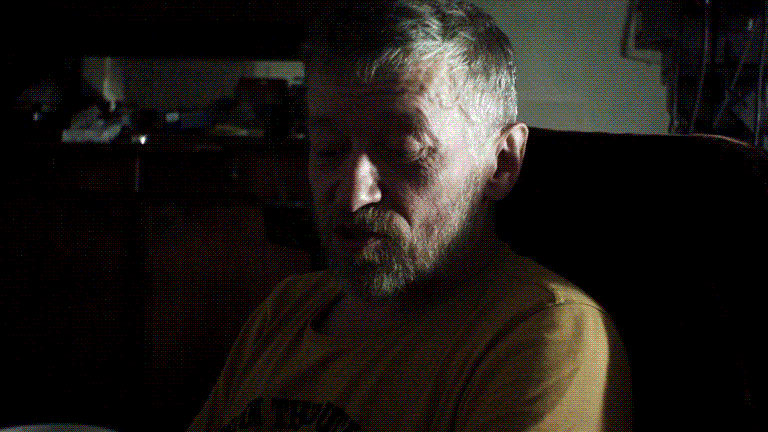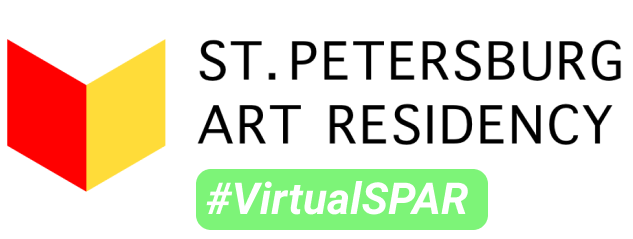The Interview with Boris Kazakov by M. Stebackov. Part 3/4
The Interview was recorded on the 2nd of August in 2022 at Boris Kazakov’s place.
The text of the interview is published in 4 parts.
- Boris Kazakov’s Brief Biography
- The Interview
Интервью было записано 2-го августа 2022 года в доме у Бориса Казакова.
Текст интервью опубликован в 4-х частях.

The Interview
Michael Stebackov: Was there a direct connection between Leningrad and Moscow concerning the parallel cinema? Aleynikovs, Yufit?
Boris Kazakov: Yes, of course. They knew each other and kept their communication alive. Somehow, everyone was doing something. For example, Yufit and Anikeyenko were starring in the “Tractor Drivers 2.” The film ends with a wedding scene, and they are all there. They are sitting and drinking, and everything in the world is there. They were represented. I have acquainted with Gleb Aleynikov much later. It was a nodding acquaintance: “Hello” — “Hello.” He has a certain conception about me. There was not so much stuff, and here there was so much you could dive into it. By stuff, I mean works.
M. S.: What about mocking in the “Tractors”?
B. K.: The “Tractor Drivers 2”?
M. S.: No, no. In the short film “Tractors.”
B. K.: I haven’t watched it, or I have watched it. Anyway, I don’t remember it and can’t say anything about it.
M. S.: There is the same feature in the “Tractor Drivers 2” as well. The offscreen commentary, which resembles a Soviet film.
B. K.: The most impressive feature about the “Tractor Drivers 2” for me was the fact the 35 mm film was scratched upon. Beforehand I had seen scratching and drawing on the 16 mm film, where the frame is rather small, and you should be quite a meticulous person. And when I watched scratching on 35 mm film, I understood that there was possibly an entirely different detailing. You can do something there. It gave me a certain impetus. I know their work quite a little, so I can’t tell you much.
M. S.: How did you meet Yevgeniy Kondratiev?
B. K.: At a drunken feast, apparently joint drunken feast. I don’t remember, I can’t say how it was. How was it then? You visited exhibitions, some parties, some raves, met someone, drank with someone. And that’s it, then you shake hands with him.
— Where are you going? What do you want?
— Can I go with you?
— Yes, let’s go.
I think it’s the same for young people now.
M. S.: The next question is on Oleg Kotelnikov. How did he treat film?
B. K.: Sometimes he may have worked himself, and occasionally, he gave the film to his daughters, and they poked at the film with felt-tip pens. It all worked out fine. Yet, Oleg takes a black film. It doesn’t matter whether it is 16 mm or 35 mm. He starts scratching animation on it. As a master of drawing, he is one of those people I know who can express clearly and precisely on film, and he also can watch what he had done. It is instantly evident that this was made by a person who has a clear notion of what he makes and what the result will be. Oleg Kotelnikov hasn’t toiled much, he has never toiled much.
M. S.: I came upon mentions of his cinematic performances when he was drawing on the film just before screenings 1.
B. K.: I remember a cinematic performance that took place once at the Rock Club when there were two motion-picture projectors set on the balcony, and there was a performance similar to a VJ session. One projector was turned on then it was turned off, sometimes both of them were operating. There were likely long focal-length lenses installed due to the spacious hall. It was a party called the Assembly. I was present at one of them and I have seen everything. Furthermore, there were just screenings. Kondratiev had made a film, and he gathered everyone to show it. Everyone comes. The house is full. The film is screened, then it gets discussed, then it is rewound, and rescreened because more people had arrived. Everyone enjoyed the show, drank, and broke up.
M. S.: There were no legal screenings, weren’t there?
B. K.: There were. Once I was at one at a Palace of Culture on Gallernaya street 2, where amateur filmmakers were gathered. They were Soviet people, wearing athletic jackets, who were frankly committed to amateur performances with a cinema camera. Yufit’s films and, probably, Moscow ones were screened there. The audience was shocked. If you bring contemporary art photographs of not homeless individuals, but some extreme ones to a club “Straws,” the reception would be the same.
M. S.: Were the films screened in the late 1980s?
B. K.: Somewhen between the late 1980s and the early 1990s, during the perestroika.
M. S.: How did people learn about each other if the screenings were sporadic?
B. K.: People were talking to each other. There were such things as exhibitions, and raves, where no one was interfering with you. At the “LF/HF” 3 on Kalyaeva street 4, when there were squats, this happened effortlessly. There were plenty of people. Numerous foreigners came to Russia during the perestroika. That was the way everyone got connected. Someone could come with someone else to your place, to your squat. You got acquainted.
-
Brashinsky, Michael, and Andrew Horton, eds. Russian Critics on the Cinema of Glasnost (Edinburgh: Cambridge University Press, 2008), 43. ↩︎
-
The Palace of Culture of the All-Russian Society of the Deaf. ↩︎
-
The squat, named “Low Frequencies/ High Frequencies.” ↩︎
-
Now the street is named Zakharievskaya. ↩︎
Интервью
Михаил Стебаков: Была ли прямая связь между Ленинградом и Москвой в параллельном кино? Алейниковы, Юфит?
Борис Казаков: Да, конечно, они знакомы были и общались все вместе. Все как-то что-то делали. Юфит и Аникеенко, например, снимались в фильме «Трактористы 2». Там заканчивается сценой свадьба. Они там есть. Сидят за столом, пьют и всё на свете. Представлены. Я с Алейниковым познакомился, с Глебом, значительно позже, и шапочно, «здрасьте» — «здрасьте». Он имеет какое-то представление. Там не так много перлов, а здесь просто их завались, в смысле как произведений.
М. С.: Я думаю про глумление в «Тракторах».
Б. К.: «Трактористы 2»?..
М. С.: Нет, нет «Трактора», короткометражка.
Б. К.: Я не видел или видел, но чего-то не помню и не могу что-то сказать.
М. С.: В «Трактористах 2» это тоже есть. Закадровый голос, который повествует, как в советском фильме.
Б. К.: Из фильма «Трактористы 2», меня больше всего впечатлило то, что в нём расчирикано по 35-миллиметровой пленке. Я до этого никогда не видел. Я видел только чириканье и рисование по 16-миллиметровой, там кадр маловат, и надо быть уж совсем, знаешь, таким. А когда я увидел на 35 я понял, что там проработка возможна вообще совсем другая. Там можно реально что-то делать. Это было одним из таких толчков. Я мало знаком с их творчеством, поэтому сказать мне нечего особо.
М. С.: Как ты познакомился с Евгением Кондратьевым?
Б. К.: На пьянке на какой-нибудь, очевидно совместной. Я не помню, не могу сказать как это было. Как тогда было? Ты на выставках, на какой-нибудь вечеринке, на каком-нибудь рейве, с людьми просто пересекся, вместе повыпивали. Пожалуйста, потом здоровкаешься с ним за руку.
— Куда идёшь? Что хочешь?
— Можно с тобой?
— Да, пойдём.
Я думаю сейчас у молодежи точно так же.
М. С.: Следующий вопрос об Олеге Котельникове. Как он работал с пленкой?
Б. К.: Иногда он может и сам работал с плёнкой, а иногда он отдавал своим дочкам, они тыкали фломастерами. Нормально всё получалось. Как? Взял пленку, взял фломастеры и стал наносить изображение на пленку, примерно себе представляя, что из этого получится. Или, Олег берёт пленку черную, неважно 16 или 35 и начинает на ней процарапывать мультфильмы. Как рисовальщик он, один из тех, кого я знаю, очень четко всё это умеет и на кинопленке может выразить, может посмотреть. Ясно сразу, что это делал человек с представлением о том, чем он занят, что будет. Сильно не парился Олег Котельников. Он никогда не парится сильно.
М. С.: Он же делал киноперформансы, создавая изображение прямо на пленке перед зрителями 1.
Б. К.: Киноперформанс, я помню, был один раз в «Рок-клубе», когда стояло на балконе два кинопроекционных аппарата и был такой виджеинг один включался, выключался, иногда они оба показывали. Там стояли видимо длиннофокусные объективы, потому что зал-то немаленький. И вот такой был сейшн «Ассамблея». Я на таком присутствовал и это всё видел. Были просто показы. Тот же Кондратьев сделал какой-нибудь фильм и зовет всех. Все приходят. И аншлаг. Смотрят фильм, потом обсуждают, потом перематывают, смотрят ещё раз, поскольку подтянулись ещё люди. Радуются, пьют, расходятся.
М. С.: Но официальных показов не было?
Б. К.: Был. Я один раз в каком-то ДК на Галерной улице 2 присутствовал, где были кинолюбители, ребята в олимпийках, советские люди, искренне занятые самодеятельностью с помощью кинокамеры. При этом показывали Юфита и, по-моему, московские дела. Те были шокированы. Это так же, как в клуб «Соломки» притащить какие-нибудь современные фотографии не бомжей, но острые. Конечно, такое восприятие будет.
М. С.: Это было в конце 1980-х?
Б. К.: Ну где-то конец восьмидесятых — начало девяностых, перестройка короче.
М. С.: Как люди узнавали друг о друге, если показы были единичны?
Б. К.: Люди же общаются друг с другом. Происходили какие-то вещи, выставки, рейвы, где ничего тебе не мешало. В «НЧ/ВЧ» на Каляева 3, когда там были сквоты, это просто проходило. И наши, и иностранцев тогда появилось полно. Поехали в Россию, перестройка. Таким образом, все коннектились. Просто к тебе может прийти кто-нибудь в гости, вновь, в твой сквот с кем-нибудь ещё. Вы познакомились.

